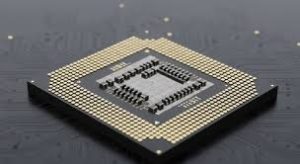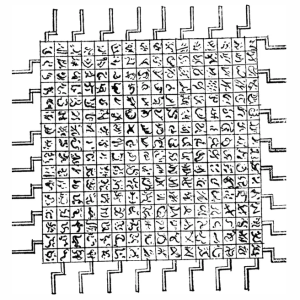“Math Tricks”

Image from Pexels.com The beauty of mathematics comes from the vision and creativity of the mathematician.
By Scott Hamilton
Did you ever start looking for patterns in mathematical functions? It was one of my favorite hobbies while I was in high school and as a result I loved calculus because we learned about patterns in common algebra equations that lead to shortcuts in solving the problems. Calculus turned page long algebra solutions into single line solutions. I came across a chart a couple of weeks ago that brought back some memories about my own children seeing and making their own math shortcuts. Some of these shortcuts took mathematicians years to develop and yet someone with a third grade understanding of math can spot the same shortcuts by finding patterns.
I grew up knowing a shortcut for multiplication by nine which worked by holding up ten fingers, counting over the number of fingers that you are multiplying by, and putting down that finger. You get a two digit answer by counting the number of fingers to the left as the tens place and the number of fingers to the right as the one place. For example if you are multiplying five by nine, you count over five fingers and put down the thumb on your left hand. You then count four fingers on the left hand and five fingers on the right for the answer of 45.
I showed that shortcut to my daughter and she used it to work her eight’s times table. She realized that eight times a number was just nine times a number minus that number, so she just subtracted the number from her nine’s times table and had the answer. For example eight times five is just nine times five minus five, or 40. Likewise, when she solved eight times seven, she just subtracted seven from her nine’s times table (9×7=63-7=56). The same daughter very quickly learned that the four’s times tables were just double the twos, which meant you just wrote down all even numbers and skipped every other number to count by fours. She spotted short-cuts in math faster than anyone I had ever met, but she also suffered with dyslexia, so reading was very difficult for her.
So in this week’s article I wanted to share some well-known, and some other less well-known shortcuts for division, as I found the information quite useful. Even if some of them seem more difficult than just working the problem, when the numbers start to get large enough, they still turn out to be big time-savers. I am going to give them in the order that I found them easiest to remember.
The first is to find out if a number is divisible by two – you just need to know that the number is even, as odd numbers are not divisible by two. To find out if a number is divisible by 10, you just have to see if it ends in zero. To find out if a number is divisible by five, you just have to see if the digit in the one’s place is a zero or a five. A number is divisible by 100 if the last two digits are zeros. The last one that just requires you to look at the number is if the number ends in 00, 25, 50, or 75, it is divisible by 25. If the last two digits of a number are divisible by four the number is divisible by four. If the last three digits of the number are divisible by eight the number is divisible by eight. The others get a little more difficult, but still save a lot of time.
If you add all the digits of a number together, you can take that sum and figure out if a number is divisible by three or nine by determining if the sum is divisible by three or nine. For example 142,128 is divisible by nine because (1+4+2+1+2+8)=18, and 18 is divisible by nine. As it turns out it is also divisible by three; the crazy part about this one is you can keep adding digits together until you get to a single digit number and it still works, from the last example 1 + 8 then equals 9 which is divisible by nine. If a number is divisible by both two and three it is divisible by six, which means if you have an even number whose digits add up to a number you can divide by three, the number is divisible by six.
The last one is the most difficult to explain and also a little tricky to do, but still is much simpler than dividing by eleven. If you add up all the digits in odd-numbered places and then add up all the numbers in even numbered places you will get the same total, or the difference between the totals will be divisible by 11. For example 7,081,426 is divisible by eleven because (7+8+4+6)-(0+1+2)=22, which is two times 11. You can repeat this one as well if you don’t know if 22 is divisible by eleven; you can easily see that 2-2 is zero.
There are other shortcuts in math that come in handy when doing things like balancing a checkbook. If you find a difference in the end you can examine that difference to find your mistake. If the difference is divisible by nine, you probably transposed numbers somewhere. If the difference is divisible by two, meaning there is an even number of cents, you likely added a number you should have subtracted or vice versa.
I really hope you find these math shortcuts useful and don’t find the article too boring. Until next week, stay safe and learn something new.
Scott Hamilton is an Expert in Emerging Technologies at ATOS and can be reached with questions and comments via email to shamilton@techshepherd.org or through his website at https://www.techshepherd.org.






